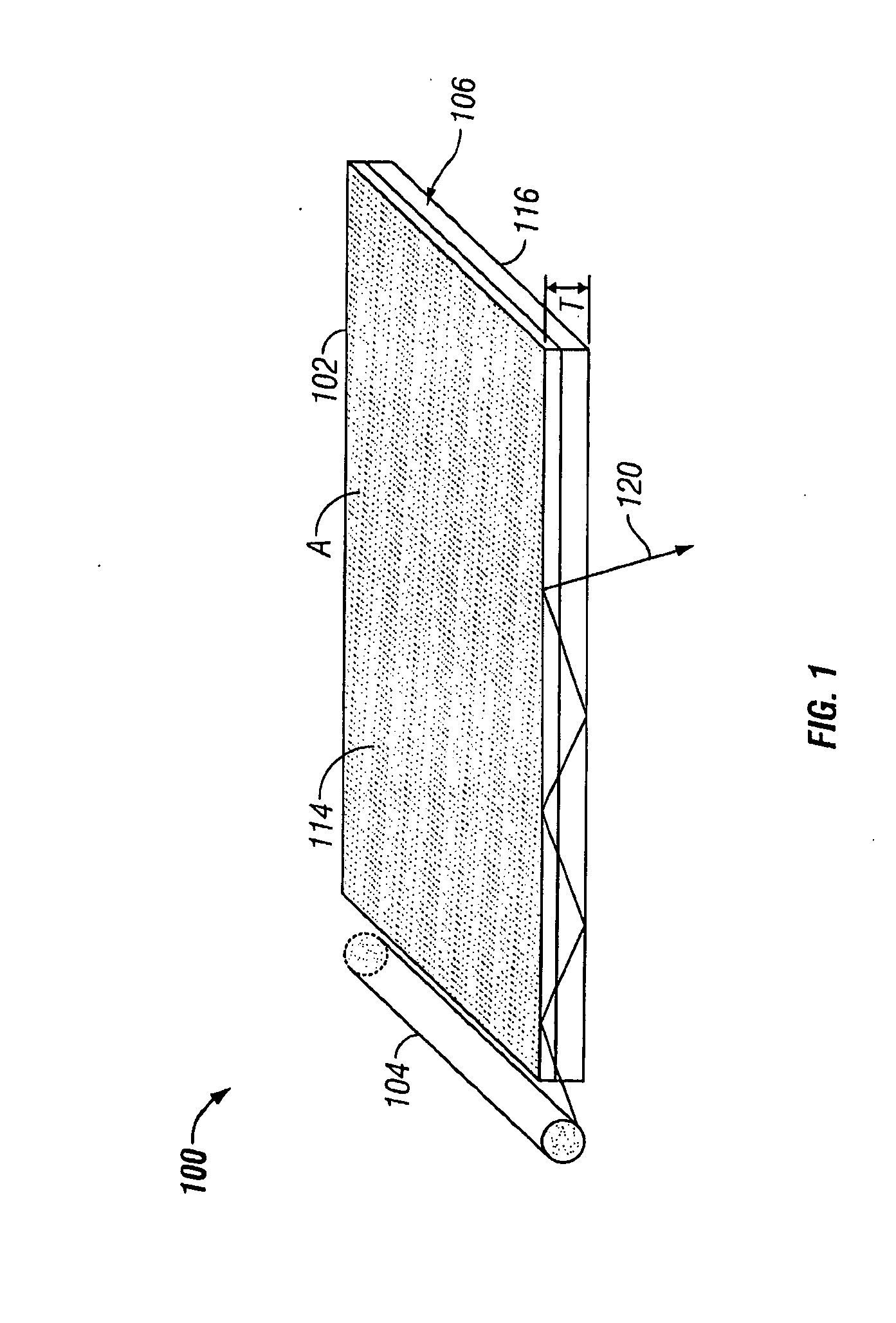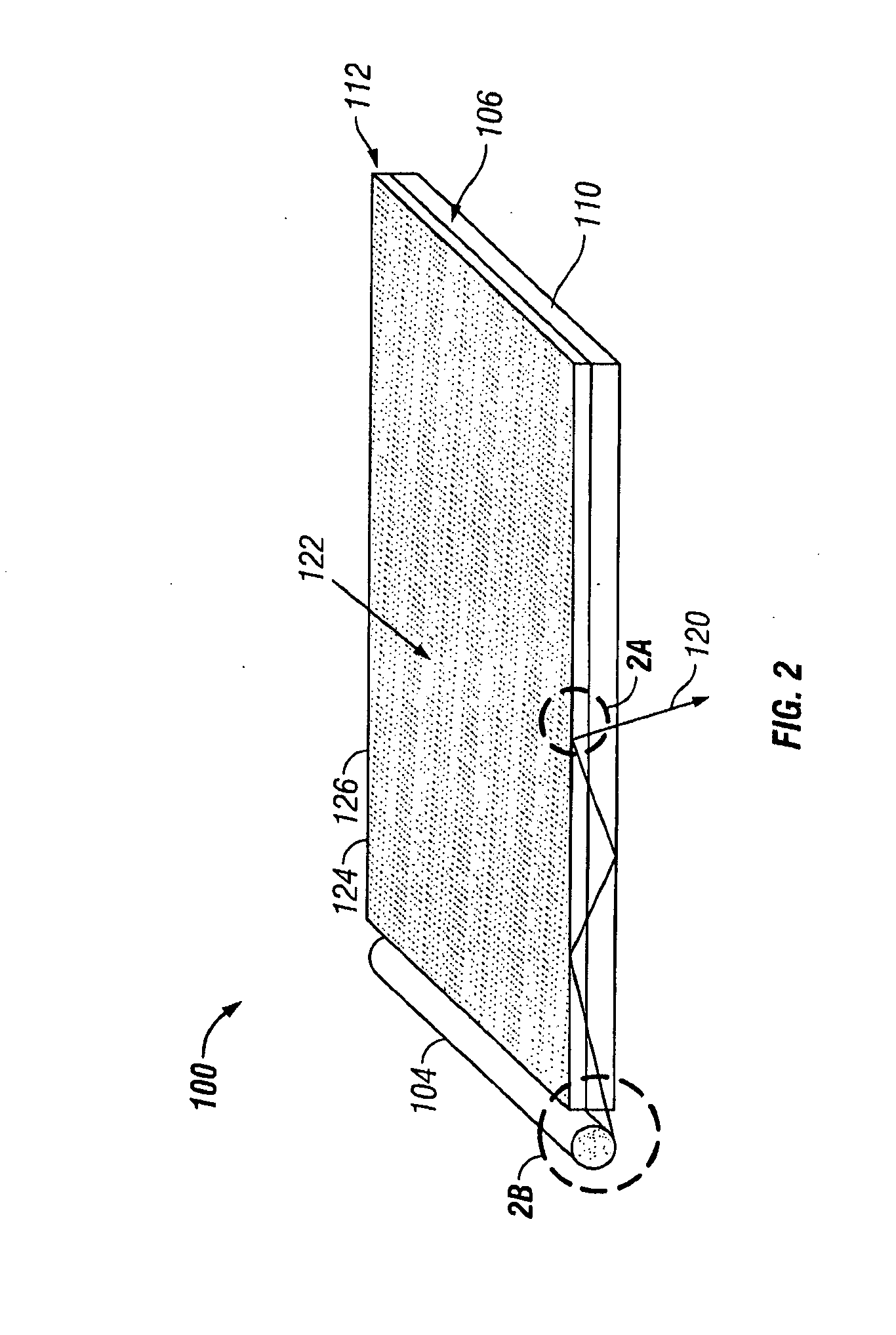Luminaires comprising waveguides
- Summary
- Abstract
- Description
- Claims
- Application Information
AI Technical Summary
Benefits of technology
Problems solved by technology
Method used
Image
Examples
Embodiment Construction
[0027]The following detailed description is directed to certain specific embodiments of the invention. However, the invention can be embodied in a multitude of different ways. In this description, reference is made to the drawings wherein like parts are designated with like numerals throughout. FIG. 1 provides a perspective schematic view of one embodiment of a lighting assembly 100 such as an architectural lighting assembly. The architectural lighting assembly 100 is configured to generate and direct light for artificial illumination of a desired area or volume.
[0028]The lighting assemblies 100 include one or more luminaires 102. The luminaires 102 are configured to generate and emit light in one or more selected light emission directions 120 as will be described in greater detail below. The lighting assemblies 100 and luminaires 102 generally comprise one or more light sources 104. The light sources 104 can be based on any of a variety of light source technology including but not ...
PUM
 Login to View More
Login to View More Abstract
Description
Claims
Application Information
 Login to View More
Login to View More - R&D
- Intellectual Property
- Life Sciences
- Materials
- Tech Scout
- Unparalleled Data Quality
- Higher Quality Content
- 60% Fewer Hallucinations
Browse by: Latest US Patents, China's latest patents, Technical Efficacy Thesaurus, Application Domain, Technology Topic, Popular Technical Reports.
© 2025 PatSnap. All rights reserved.Legal|Privacy policy|Modern Slavery Act Transparency Statement|Sitemap|About US| Contact US: help@patsnap.com



